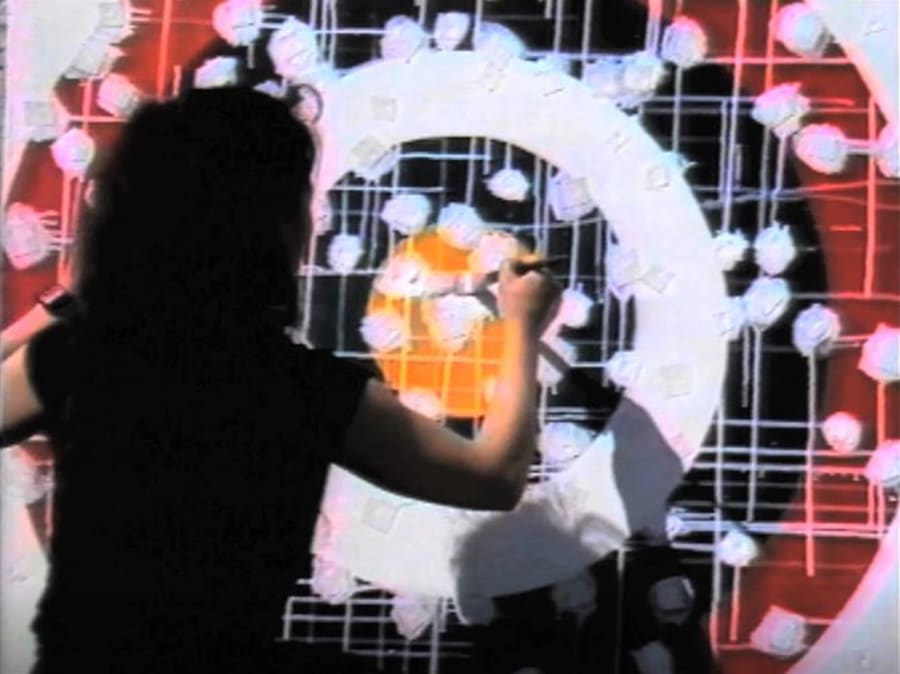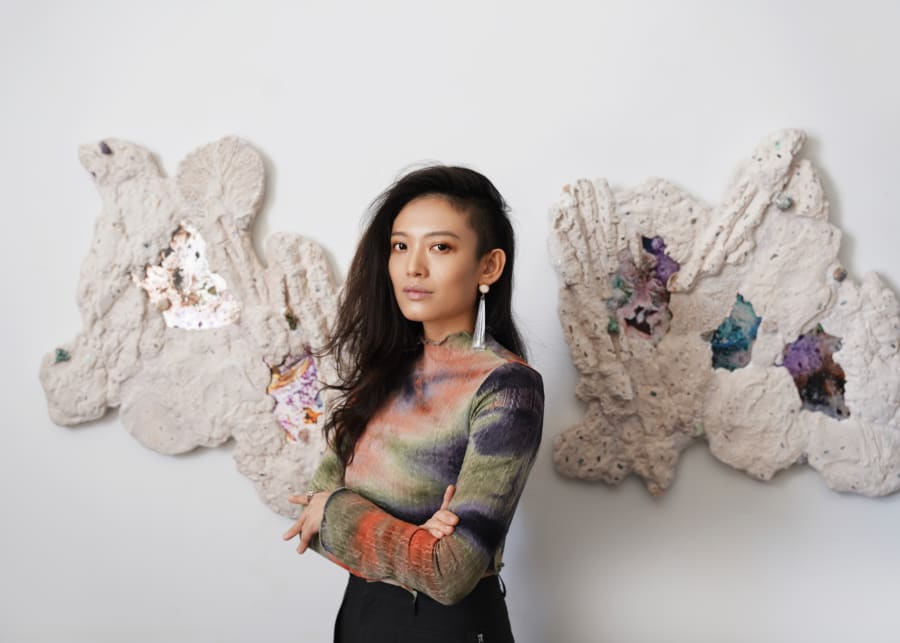This March Art Basel Stories celebrates female creativity and leadership with a new series of interviews, ‘What I’ve learned’. In these, some of the many figures we admire across the art industry reflect on what got them where they are.
‘I always say that if you ever forget your history, then you won’t know who you are or where you’re going. There’s no way that I can be in the present or look to the future without also looking back, and that back and forth shows up in my work.
‘Art wasn’t a part of my childhood. I wasn’t a kid who drew or painted or made things with clay. I was loud. I have a twin sister, who’s very quiet. I was always the stubborn one, the troublemaker, and even today I’ll pick fights. I’m more of a brother to her.
‘I began making art by accident, in my final year of high school – I took it as a subject partly because I didn’t want to spend my time reading. The classes were fun. We weren’t supervised and nobody failed – everybody had to pass art. So that’s how it started. But then I enjoyed it and it turned out I was good at it, too.
‘My father was mad that I wanted to do an art course after high school, because he felt that being an artist wasn’t a real profession. But I finally won his heart and went to study at Makerere University in Kampala, the capital city of Uganda. For the first time I was able to choose between different art forms, and I fell in love with wood carving. When I came to the campus I saw a woman, who later became my teacher, carving a giant piece of wood. And I said that’s what I want to do. So I took modeling and wood carving.
‘I also did ceramics. But it was really just functional pottery-making, modeling clay and using the potter’s wheel. I never had the chance to experiment with glazes because they were expensive and reserved for professors and students majoring in ceramics. When I later came to New York City, the availability of resources excited me – and it continues to excite me to this day.
‘I think one of the most important lessons life has taught me is to slow down. I am learning to take things in. That you don’t always have to be in a rush. That it can help to sleep on things. I’m not a night person – I don’t go to clubs and I love being back at the house by six – but I am nonstop when it comes to my work.
‘When I’m not creating I can’t think. I work Monday through Friday, often in my sculpture studio in the morning, a few stops on the subway from my home in Brooklyn, and in the afternoon I might catch the train up to the ceramics studio in Queens.
‘I don’t listen to music when I’m working because I want to concentrate. I spend my weekends at home, walking around the neighborhood, watching TV. I do a lot of healthy things nowadays, like going to the gym or swimming. I like simple pleasures.
‘I’m learning how to make my own decisions. Coming from Africa, I always thought that being an artist was just about creating art – and it’s not. It’s also about making decisions as the art becomes a business and the works go to a gallery and to the market. I’m looking forward to seeing what becomes of the decisions I’ve made so far.
‘Being an artist is also about taking risks. Whether I’m working with wood or ceramics, I often don’t know how a piece is going to turn out, especially when it comes to working on a large scale and splashing on glazes. Even coming here from Uganda and deciding to stay was a risk – and I embraced it.’
Leilah Babirye is represented by Stephen Friedman Gallery (London, New York), and Gordon Robichaux (New York).
In 2024, Leilah Babirye’s exhibition ‘Obomu (Unity)’ will be on view at the Yorkshire Sculpture Park of West Bretton from March 23 to September 8. Her work will be on view in Stephen Friedman Gallery booth’s at Art Basel Hong Kong, from March 28 to 30. She will also participate in the 60th Venice Biennial in April.
Chloë Ashby is an arts and culture writer based in London. She is the author of the novels Wet Paint (2022) and Second Self (2023).
Caption for top image: Leilah Babirye. Photograph by An Xiao Mina. Courtesy of Stephen Friedman Gallery, London and New York, Gordon Robichaux, New York.
Published on March 7, 2024.


